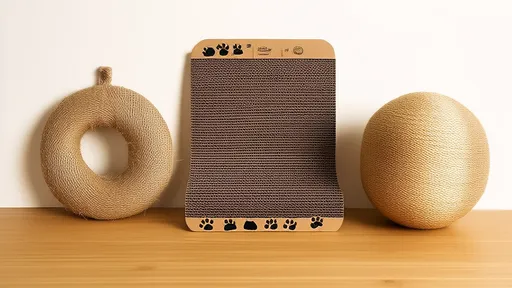Every cat owner knows the struggle of keeping furniture safe from sharp claws. Investing in a good scratching post is not just about saving your couch—it’s about providing an essential outlet for your cat’s natural behaviors. But with so many options available, how do you choose the right one? The answer lies in understanding your cat’s preferences, the durability of materials, and the design that best fits your home.
The Importance of Scratching for Cats
Scratching is an instinctive behavior for cats. It helps them stretch their muscles, mark their territory, and maintain healthy claws. Without an appropriate outlet, cats may turn to furniture, carpets, or even walls. A well-chosen scratching post can prevent these unwanted behaviors while keeping your pet physically and mentally stimulated.
Cats also use scratching as a way to relieve stress. The repetitive motion can be soothing, especially in multi-cat households where tension might arise. Providing multiple scratching surfaces in different areas of the home can help reduce conflicts and ensure every feline resident has their own space.
Material Matters: What Do Cats Prefer?
Not all scratching posts are created equal. The material plays a crucial role in whether your cat will actually use it. Most cats prefer rough textures that allow them to dig their claws in and pull. Sisal rope or fabric is a popular choice because it mimics tree bark, a natural scratching surface for wild cats. Cardboard scratchers are another favorite—they’re inexpensive and can be easily replaced, though they may not last as long.
Carpeted scratching posts are common, but they’re not always the best option. Some cats love them, while others ignore them entirely. One downside is that carpet can snag claws, and if your cat has previously scratched your actual carpet, they might not distinguish between the two. If you opt for a carpeted post, choose one with a low pile to minimize this risk.
Size and Stability: Ensuring Your Cat Feels Secure
A wobbly scratching post is a deal-breaker for most cats. If the post tips over during use, your cat will likely abandon it. Look for a sturdy base or a wall-mounted option that won’t move when scratched. Taller posts are ideal because they allow cats to fully stretch their bodies—something they instinctively want to do after naps.
For kittens or smaller cats, a shorter post may suffice, but investing in a taller one early on can save you from needing an upgrade later. If you have multiple cats, consider having more than one post to avoid competition. Some cats prefer horizontal scratchers, so offering a variety of angles can cater to different preferences.
Placement: The Key to Success
Even the best scratching post won’t be used if it’s tucked away in a corner your cat never visits. Place the post in a high-traffic area where your cat spends a lot of time. Many cats enjoy scratching after waking up, so positioning it near their favorite sleeping spot can encourage use.
If your cat has already started scratching furniture, placing the post directly in front of the damaged area can help redirect their behavior. Over time, you can gradually move it to a more convenient location once the habit is established. Using catnip or dangling toys near the post can also make it more enticing.
Maintenance: Keeping the Post Appealing
Scratching posts wear out over time, and a frayed, unstable post won’t attract your cat. Regularly inspect the post for damage and replace it when necessary. For sisal posts, you can sometimes extend their life by rewrapping loose sections, but once the material becomes too soft or unraveled, it’s time for a new one.
Rotating different types of scratchers can also keep things interesting for your cat. Introducing a new texture or shape every few months can renew their interest and prevent boredom. If you notice your cat ignoring the post, try sprinkling fresh catnip or using a pheromone spray to make it more appealing.
DIY vs. Store-Bought: Which Is Better?
For the crafty pet owner, making a scratching post can be a fun project. DIY options allow for customization in size, material, and design. However, ensuring stability and durability can be challenging. If you go this route, use high-quality materials and secure everything tightly to avoid accidents.
Store-bought posts offer convenience and are often designed with both cats and aesthetics in mind. Many modern scratching posts double as stylish furniture, blending seamlessly into home decor. While they may be more expensive upfront, a well-made commercial post can last for years with proper care.
Final Thoughts
Choosing the right scratching post comes down to observing your cat’s habits and preferences. There’s no one-size-fits-all solution, but by considering material, stability, placement, and maintenance, you can find an option that keeps both your cat and your furniture happy. A little trial and error may be involved, but the effort is well worth it when you see your cat happily stretching and scratching in just the right place.

By /Jul 21, 2025

By /Jul 21, 2025

By /Jul 15, 2025

By /Jul 15, 2025

By /Jul 15, 2025

By /Jul 15, 2025

By /Jul 15, 2025

By /Jul 15, 2025

By /Jul 15, 2025

By /Jul 15, 2025

By /Jul 15, 2025

By /Jul 15, 2025

By /Jul 15, 2025

By /Jul 15, 2025

By /Jul 15, 2025

By /Jul 15, 2025

By /Jul 15, 2025

By /Jul 15, 2025